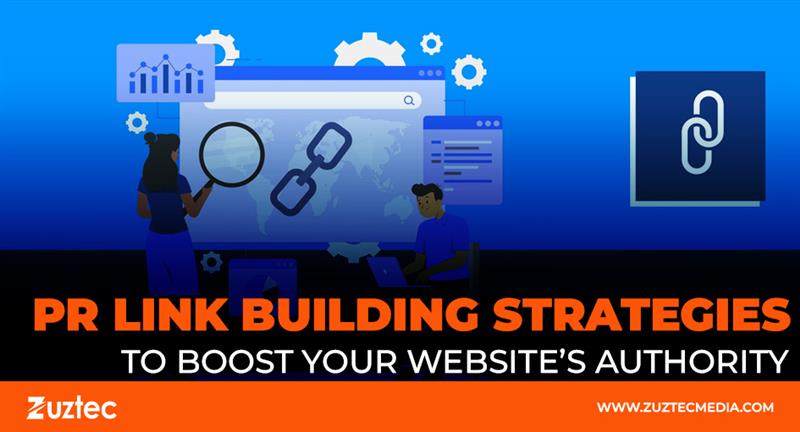
PR Link Building Strategies to Boost Your Website’s Authority
In the competitive world of digital marketing, standing out and earning trust is essential for success. One of the most effective ways to achieve this is through strong link-building efforts, particularly by using smart PR techniques. Public relations (PR) and link building go hand in hand when it comes to improving your website’s authority and search engine rankings.
PR link building strategies involve using media outreach, brand storytelling, and content creation to naturally attract backlinks from reputable sources. Instead of chasing low-quality links, businesses can use PR methods to earn links that not only boost SEO but also build brand credibility. These backlinks come from trustworthy publications, news sites, and popular blogs, giving your site the kind of endorsement that search engines value highly.
The benefits of PR link building extend beyond SEO. It helps you reach wider audiences, increase brand awareness, and position yourself as a thought leader in your industry. A strong PR strategy can open doors to new partnerships, customer relationships, and business opportunities, all while supporting your search engine optimization goals.
In this article, we’ll take a closer look at what PR link-building strategies involve, how you can implement them effectively, and common mistakes you should avoid. Whether you’re a business owner, marketer, or SEO professional, understanding these techniques will help you create a more powerful and lasting online presence.
Understanding Pr Link Building Strategies
One of the most popular PR link-building strategies is creating press releases about major company updates, product launches, or important milestones. Another effective method is newsjacking, where you create content that ties into current events or trending topics. By offering expert opinions, data, or helpful resources, you can get your content featured in relevant articles and blogs covering the topic.
Collaborating with journalists through platforms like HARO (Help A Reporter Out) is another important tactic. By responding to journalists’ queries and offering valuable insights, you can earn authoritative backlinks when your contributions are cited in published stories.
Hosting webinars, releasing research studies, and conducting expert interviews also help create link-worthy content. These types of assets provide value to publishers looking for fresh information to share with their audiences.
The key to successful PR link-building strategies is focusing on value, relevance, and timing. If your content genuinely helps a journalist tell a better story or educates their audience, they are far more likely to link back to you naturally.
How To Implement Effective Pr Link-Building Strategies
The first step is to identify what makes your brand newsworthy. This could include new product launches, major business developments, or unique insights into your industry.
Next, you should create a media list of relevant journalists, bloggers, and publications that would be interested in your story. Tailor your pitches to show that you understand each journalist’s audience and explain why your story matters to them.
Writing high-quality press releases and pitching them effectively is a major part of the process. Keep your releases concise, factual, and engaging. Include direct quotes, compelling statistics, and clear contact information to make it easy for journalists to cover your story.
Building relationships over time also plays a huge role in PR link building. Engage with journalists and bloggers on social media, comment thoughtfully on their articles, and offer help when you can. By becoming a known and trusted resource, you’ll increase your chances of earning backlinks in the future.
Monitoring for media opportunities through services like HARO or SourceBottle allows you to jump on relevant requests quickly. When you provide timely and valuable responses, you position yourself as an expert and increase your chances of being cited.
Finally, track your efforts and results. Use tools like Google Analytics and backlink tracking software to monitor where your links are coming from and how much traffic they generate. This helps refine your PR link-building strategies over time for even better results.
Common Mistakes To Avoid With Pr Link-Building Strategies
While PR link building strategies can be highly effective, there are common mistakes that can limit your success if you’re not careful.
One major mistake is sending out generic pitches. Journalists receive hundreds of emails daily, and generic outreach usually gets ignored. Always personalize your communication and make sure your story is relevant to their beat and audience.
Another common error is focusing solely on your needs rather than providing value. Journalists are interested in what’s new, interesting, and helpful to their readers — not just promoting your brand. Ensure that your pitch highlights the value for the audience first.
Ignoring follow-up is another mistake. Sometimes, a gentle reminder a few days after your initial pitch can make the difference between getting coverage and being forgotten. However, always remain polite and respectful; pushy follow-ups can damage your reputation.
Finally, failing to measure and analyze your results can lead to wasted effort. Tracking which stories and pitches lead to backlinks allows you to learn and improve your future campaigns.
By avoiding these pitfalls and focusing on genuine value, smart outreach, and strong relationship-building, you can master PR link building strategies and significantly enhance your online authority.

